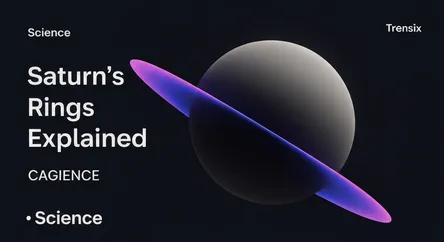Science
Saturn's Rings Explained

Discover the breathtaking beauty of Saturn's rings. Learn what they're made of, why they're disappearing, and their impact on planetary science.
What is it?
Saturn's rings are the most extensive planetary ring system in our Solar System. They are not solid but are composed of countless individual particles of water ice and rocky material, ranging in size from microscopic dust to mountain-sized chunks. These particles orbit Saturn in a thin, flat plane around its equator. The main rings are named alphabetically in the order they were discovered (A, B, C, etc.) and are separated by gaps, the most famous of which is the Cassini Division, a 4,800 km wide region between the A and B rings.
Why is it trending?
Recent scientific discoveries have brought Saturn's rings into the spotlight. Data from NASA's Cassini spacecraft, which concluded its mission by plunging into Saturn in 2017, revealed that the rings are disappearing at a rapid rate. This phenomenon, known as 'ring rain', sees ring material being pulled into Saturn by its gravity and magnetic field. Scientists estimate the entire ring system could be gone in as little as 100 million years—a relatively short time in cosmic terms. This finding is changing our understanding of how long planetary rings can last.
How does it affect people?
Studying Saturn's rings provides a unique window into the formation of our solar system. The rings act as a miniature model of the protoplanetary disk from which planets form, helping scientists test theories about planetary evolution. The discovery of their finite lifespan also raises questions about other ringed planets and the history of our own cosmic neighborhood. For the public, the sheer beauty and complexity of Saturn's rings inspire awe and fuel interest in space exploration, encouraging new generations to pursue careers in science, technology, engineering, and mathematics (STEM).